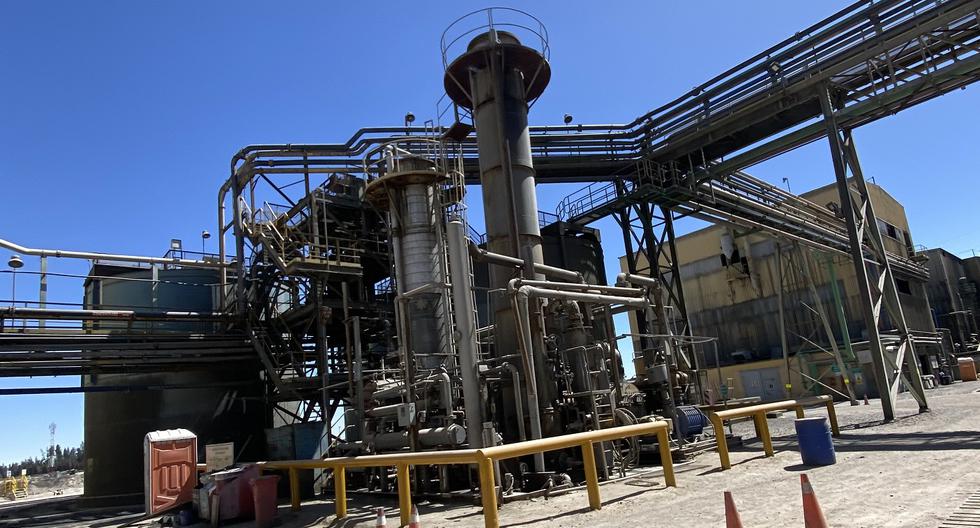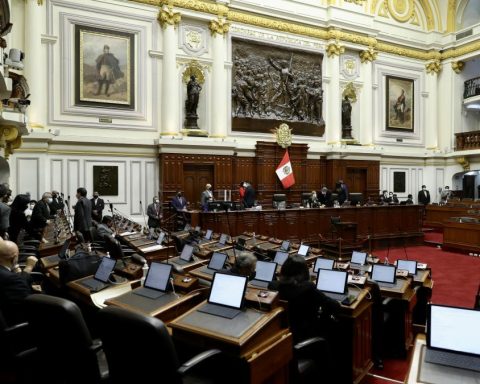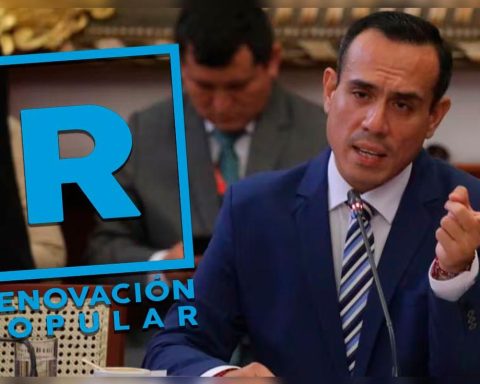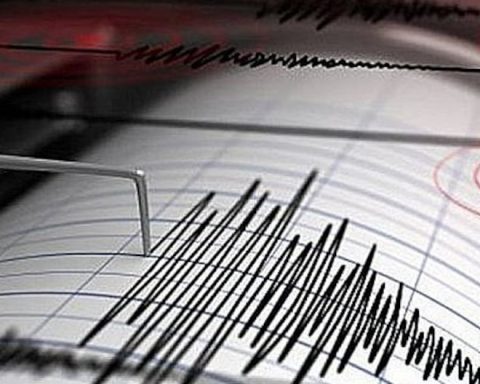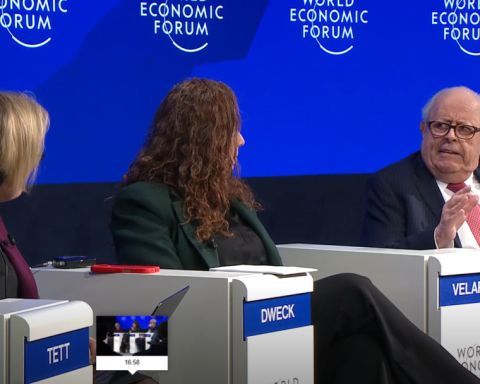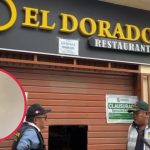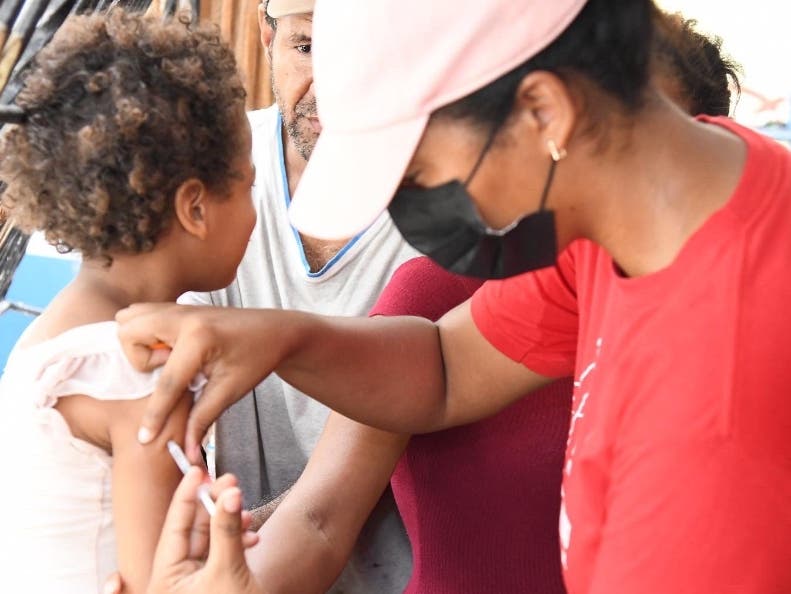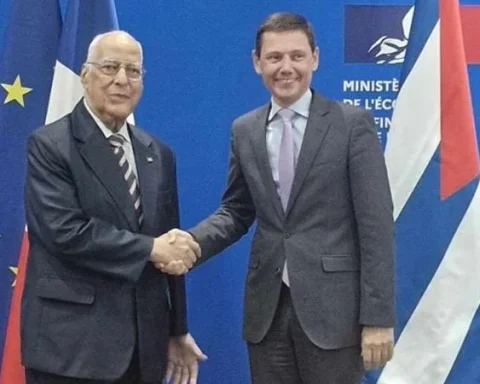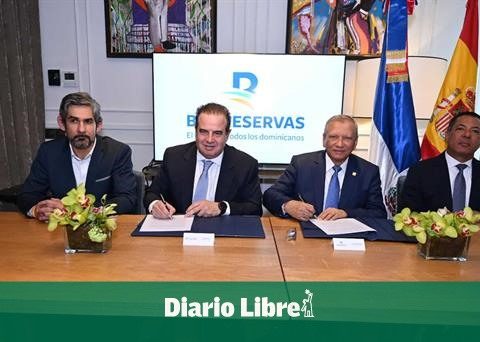By Isaac Vasquez Tello and Cesar Zorrilla
On Thursday night, the peasant community of Tumilaca, Pocata, Coscore and Tala agreed to return the Viña Blanca reservoir, after almost two months, to the Cuajone mine (Moquegua) and allow nearly 5,000 workers and their families to have water again. The agreement, which was reached as a truce, was the product of a rapprochement and negotiation between government authorities and community leader Iván Mendoza, who together with its president Dionilde Flores Calizaya, led the actions against the mine.
Who are these characters that promoted such a forceful measure in the south of the country, thereby causing the loss of millions of soles in tax revenues and in royalties and canon for the citizens of the region?
Although they are little known, both have a high influence in the community, Mendoza being a member of the community and Dionilde the president. In addition, the two have political ties, as Peru21 was able to verify.
THE MILITANTS
The political profile of Mendoza makes us look at one of the political parties that won the most seats in Congress in the recent elections and that, despite presenting itself as an opposition in Parliament, has come to flirt with the ruling party: People’s Action.
Mendoza joined Acción Popular on January 5 of this year and although he does not appear as a leader of provincial or district committees, he is an active member of the lampa party and has previous experience in another political group, since he was also a member of the Peruvian Nationalist Party, with a membership date of May 14, 2014 to September 7, 2021.
In addition, it appears as a “natural person with business”whose activity is rental and leasing of motor vehicles, according to Sunat.
In the case of Dionilde Flores, she belongs to Together for Perua party that included the current community president as a member of the list of affiliates on April 1, 2011.
Currently, Flores is listed as affiliated with said political organization, according to the Registry of Political Organizations.
:quality(75)/cloudfront-us-east-1.images.arcpublishing.com/elcomercio/XW2BS7OC7NAKZCQX5CQYTJO6YQ.jpg)
This newspaper managed to contact Flores on Thursday, April 21 at his home, a three-story cement house that stood out conspicuously compared to the homes of his neighbors, located in the town of Tumilaca, in the Torata district, in the Moqueguan province of Marshal Grandson.
When Flores was asked about her political affiliation, she said: “If I were looking for political intentions, I would be in the media tomorrow afternoon and night, but personally I don’t like it and I don’t like to participate in politics.”
Once again he was asked if he has signed up for Together for Peru, and he replied: “Well, maybe I have signed up. I don’t remember (…). Perhaps they have asked me for a signature, but as you can see, I don’t appear in the media, I don’t like to participate much. I dedicate myself to what my job is.”
After her response, this medium asked the president of the community what work activity she was engaged in, but she preferred not to address the issue. “It’s something personal,” she said and assured that this year will end her term as president. However, Peru21 confirmed that Flores appears as legal representative and general manager of Apirkar SACaccording to data from the National Superintendence of Customs and Tax Administration (Sunat)
the other business
Apirkar began its activities on April 1, 2018 and presents as its main economic activity services related to “land transport”, while as a secondary activity it lists “rental and leasing of motor vehicles”. The fiscal domicile of said company is in El Molino, Tumilca, the same where this medium interviewed Flores.
In Apirkar’s Facebook profile, its owner presents it as a company that “is dedicated to the rental of vehicles for personnel transport (white goods) and to the construction and consultancy of civil works.” In addition, on the same page, Flores’ mobile phone is listed as a contact number and it is mentioned that the company belongs to the community of Tumilaca-Pocata-Coscore-Tala, although this does not appear as such in the Sunat.
It is noteworthy that the community that Flores presides over also has another company, whose activities formally began on March 6, 2020. It is the Tumilaca-Pocata-Coscore-Tala-Ecoser TPCT Communal Services Company, whose fiscal domicile coincides with that of Apirkar, that is to say that of Dionilde.
As main activity it lists the “rental and leasing of other types of machinery, equipment and tangible goods” and as a secondary activity “road freight transport”.
This last company, in addition, has as legal representative the former president of the rural community Rubén Centeno Soto, and has a fleet of 17 Toyota Hilux trucks.
The latter were the product of an agreement within the framework of Anglo American’s Quellaveco project, which allowed said community firm to be a supplier to the mining company.
The demand
The blockade of the railway line that allows minerals to be transported from Cuajone and the seizure of the reservoir were measures that the community adopted to claim the alleged ownership that it claims to have over part of the land where the mining operation is taking place, including the area where the reservoir.
But what they ask to compensate for this supposed use of their land borders on extortion. The community demanded that Southern pay US$5 billion and 5% of the profits. How is this explained?
Flores assured Peru21 that everything boils down to the fact that the community would be demanding payment of US$5 billion for the use of the territory during all the years of the mine’s operation, that is, since the 1970s.
“Basically (the amount required) is for the use of the property, for the use of the land that the company has made over the years, since 1955, it seems to me. And also because of structures such as the Viña Blanca dam and the tunnel that passes through the community. There are accesses that have been made that are within the property of the community”, he said and asserted that he could not assure whether the demand for the US$5,000 million could be reduced, since it would be a community agreement that will be evaluated at the dialogue table. . “The way this has started is the way the community has decided. It is not my initiative, but the community itself, “said Flores.
For him specialist in energy law and partner of the consulting firm LQG, Anthony Laub, the actions of the community having taken over the reservoir for almost two months and ending up demanding the astronomical sum of money would qualify as extortion. And to this he adds that the community could be subject to legal action by the affected workers.
“Any of them could file a criminal complaint for attempts against life and salutes those responsible for the community,” he said.
On the other hand, it considered that, except for aspects related to the legal regime of the indigenous communities, the property belongs to the mine, in accordance with the provisions of the Civil Code.
“For practical purposes, any action or claim has already prescribed for a long time and then you have the issue of possession. I would imagine that Southern has owned plus peaceful and continuous possession for over four decades. The Civil Code speaks of 10 years in case of precarious possession and five in case of fair title. So all these processes have already been overcome. Legally there is nothing to claim”, explained Laub.
“What is surprising is that after four decades they come to say that this land belongs to this community”he added.
Keep in mind
-The stoppage of the Cuajone mine (Moquegua) meant a loss of S/8.5 million per day in terms of payment of income tax, canon and royalties for the State. This meant that the country and the citizens of the Moquegua region stopped receiving more than S/450 million.
-The blockades and the seizure of the reservoir that caused the stoppage of the mine caused the Southern mining company to postpone the Cuajone expansion project. This implies that approximately US$850 million will not be invested in Peru.
Cuajone: a mining operation with five decades
Cuajone is not a project that has been promoted recently in Moquegua. Its history dates back to the 1940s, since in 1937 it was recognized as a potential copper deposit by the Cerro de Pasco Copper Corporation geologist, AC Schmedeman. This is how it is disclosed in the report Prospecting, exploration and development of the Cuajone deposit, registered in the Geological, Mining and Metallurgical Institute.
Years after being recognized as a deposit and after exploration was carried out in the area, a joint venture emerged between Cerro de Pasco and Newmont, which would later associate with the companies Phelps Dodge and Asarco to form Southern Peru Copper Corporation within the framework of the feasibility of the Toquepala project.
Since then the years would pass until in 1969 the history of Cuajone as it is known today would begin, because after several negotiations with the Peruvian State, they agreed to execute the project through an agreement with the military government of Juan Velasco Alvarado. In this way, the 1970s would be the one in which said mine would begin to forge its history.
The same year of the agreement, drilling work began and shortly after, in 1970, construction began.
The development of the copper mine infrastructure included the deployment and construction of roads and offices, laying of water and sewage networks, among other structures.
Once the works were carried out, the production of the mine officially began in 1976 and since then it would go through a series of changes and improvements that allowed it to be one of the main copper producers in the country.
